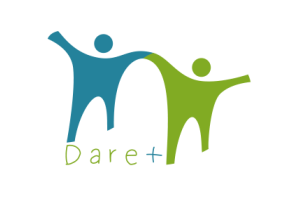
Day 2: Session 1. Activities to Develop the Competence
Targeted competences:
Teamwork
Connection to programme competences or aims:
Output 4_Design+ implementation IP
Output 7_Design of Methodology
Learning outcomes for the session
At the end of this session trainers will be able to:
- Select and adapt at least a two training activities in context and with a view to the audience
- Organize and implement activities to develop the competence of teamwork
- Evaluate the effectiveness of the session
Pre-requisite learning/competence
Achievement of learning outcomes in Session 2
Resources
- Dare+ rubrics for competence of teamwork
- Laptop and projector, access to academic literature on teamwork
Session duration
4 hours
Number of participants
10-15
Session description [structure, parts, activities]
- Introduction to the session and presentation of the expected learning outcomes
- The Lego challenge: participants are involved in a competition in order to conceptualise and create representations of the competence teamwork. Participants are divided in groups; each group is asked to build certain objects within a given time frame. The more objects one group produces, the better for winning the competition
- Feedback and reflection on the Lego exercise. Participants are reflecting on two elements: teamwork representations/concepts in the objects that were built, and the teamwork dynamics within each group during the exercise.
- JIGSAW exercise: Participants are divided into small groups (3 persons) and are given scientific texts explaining different aspects of teamwork. Each group produces a drawing representing the main concepts emerged from the text. Participants are then mixed in new small groups in such a way that one from each drawing participates in each new group. Then the new groups look at one drawing at a time trying to figure out what it represents, and receive feedback from the member who draw the picture.
- Feedback and reflection on the JIGSAW exercise: Participants are again reflecting on two levels of teamwork. One was collaborating in the drawing group trying to transform the text into a comprehensive figure, and the other was the process of understanding several drawings within another group, by integrating different points of view.
- Small group activity: summarising lessons learned from the two activities and possible implementation in trainers’ local contexts.
- Evaluate the session using the “Barometer”: Participants are asked to move around the room. The trainer then tells the participants that one side of the room is “total agreement” and the other is “total disagreement”. Then the participants choose a position according to their opinion and justify the position with a brief explanation.
Mode of evaluation
15 min focus group discussion on achievement of learning outcomes
Dare+



